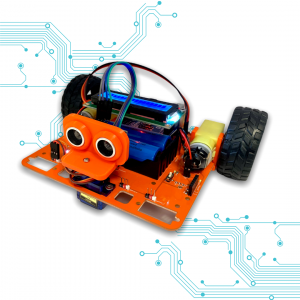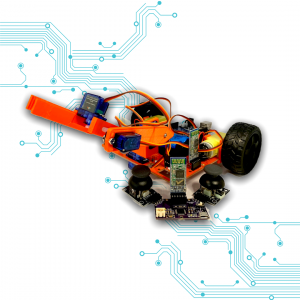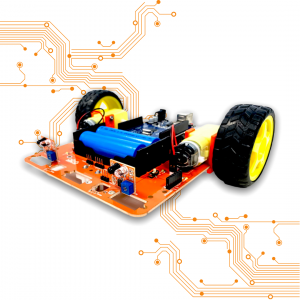STEM Education

Want your child to be engaged in an activity to develop multi-dimensional skills? Introducing ‘STEM learning’ is the best choice for your child at an early stage.
STEM-Sciences, Technology, Engineering, Math
STEM Learning process empowers children to think critically and solve analytical problems. It is a source of immense excitement among children to learn through new and technology-enabled tools. Furthermore, STEM learning provides a hands-on experience to the kids, helps them deal with multi-dimensional challenges, builds their confidence, and enables them to use their creative side starting at a very young age.
STEM let the child take a lead in his or her own learning to know ‘why’, ‘what’, and ‘how’ things are done. The more they explore with their minds and with their senses, the they are more curious, observe, designing, building, testing, and solve problems. Moreover normal day-to-day activities also helps a child in cultivating strong STEM skills. For example, sowing vegetable seeds, and watching them sprout and grow, can give an idea about the process of nurturing the food we eat. So STEM is an essential type of learning.
Benefits of STEM education
STEM education is getting popular and many schools are implementing it in their curriculum and making it an integral part of their teachings. Hence sharing 7 benefits below.
-
Fosters innovation and creativity:
In the process of STEM learning, children develop innovative ideas and then implement them. This is crucial for boosting their creativity and ingenuity.
-
Builds resilience:
STEM education activities give students a platform to make mistakes that helps in building confidence. Also, it will help them to accept their failures in a very positive way and keeps them going forward. Because failure ultimately leads to success.
-
Encourages experimentation:
In our Early times, risk taking was never encouraged and many innovations never happened due to that attitude. In STEM education, it allows students to experiment and take risks during learning activities from K -12.
-
Encourages Teamwork:
STEM learning encourages to work in teams. Students with all different levels come up together and get a chance to show their skills and knowledge with constructive results.
-
Encourages knowledge application :
In STEM learning students are motivated that the skills they acquire can be utilized immediately. Accordingly, it will help them be always hands-on in applying their knowledge to the task.
-
Encourages Tech Use :
As the world is becoming more tech centered STEM learning gives them a platform to learn the power of technology and innovation. Instead of being hesitant they will be prepared to embrace technology.
-
Helps in problem-solving:
STEM learning experiences help students how to examine problems and create a plan to solve them with their critical thinking skills. It teaches them to brainstorm before coming to conclusions.
-
Encourages adaption:
At the very early stage of life, children get a platform to do the learning in a very experimental way. STEM education teaches children to adapt the concepts and to use different techniques to solve the real-life problems
Why STEM Education now?
There are so many reasons to highlight the importance of STEM education. As STEM itself states-Science, Technology, Engineering, and Math (STEM) education will assist students to climb up the ladder of success. These days Technology and Engineering jobs are on the rise. That’s why schools are trying to introduce STEM learning skills at a very early stages of student’s life.
Globalization
In today’s 21st century globalization and knowledge-equipped economy create an imperious need to develop STEM skills. As the global economy is changing STEM skills help to bridge the gender and ethnic gaps found in Math and science. These skills are essential to Australia’s productivity and current jobs are disappearing due to Automation. On the other hand, 75% percent of jobs require workers with STEM skills.
What are STEM skills?
STEM specifically relates to skills needed in subjects like science, mathematics, engineering, and general skills. These general skills related to STEM are:
Creativity
STEM problems usually require the ability to look, observe closely and find an “out of the box “solutions. In a pursuit to make better products, developing solutions using STEM, and learning from failures are integral parts of the process of boosting creativity. In STEM, the creative skills work alongside other skills like Science, Engineering, etc. to develop new problem-solving methods, or products. Innovations in the technology sector can be attributed to creativity.
Research
This refers to the ability to discover new information. Working in STEM requires research to find relevant data to process and use for the experiments and derive better methods for completing a project. For example, an engineer who works on a project may research prior work/projects to discover successful methods and apply them.
Analysis
The ability to examine the information to reach a conclusion is referred to as Analysis. The analysis is when the information is researched and creative methods are applied to approach a useful conclusion or solution for the STEM project. Analysis may also mean comparing the latest solution/data with the past data to understand how the solution is better compared to the previous one.
Inquiry skills
STEM needs hands-on active participation to solve problems. In STEM brainstorming activities children will actively query the problems, generate new ideas, and come to solutions and decisions.
Collaboration and Teamwork
Working as a team on a complex project may lead to several new ideas. Through this, children will learn to collaborate with the team and choose the best from these multiple solutions in a reduced time frame. STEM problems involve learning to work as a productive part of a high-performing team.
Engineering design thinking
Once a child faces an issue they will build epitomes to solve the problem, test them out and make improvements until they approach the best solutions. Various STEM professions use this skill including engineering, programming, and medicine.
Problem-solving
Solving STEM problems enables you to train your brain to quickly gather inputs to analyze a problem, solve the problem at hand; develop logic and design workable solutions, and test each one out to determine the best method to implement, for example, a computer programmer may produce a faster software.
Math and Science skills
Math and science are the foundation of STEM skills, so, they both help in highlighting connections between ideas and subject areas. Use of complex mathematical calculations and structural analysis to reach an engineered solution ensuring the design or the solution is workable and safe. A good example is engineers use these calculations and analysis to ensure buildings and bridge designs are safe, while medical professionals use the same to provide medication to their patients. These all can be termed STEM projects.
Easy Resources to implement for STEM learning?
There are endless opportunities to practice STEM skills and learn STEM concepts when engaging in open-ended or free play and they should be led by the children as parents, we can help them to use these skills in the real world.
Obstacle course
This is the best activity for kids to practice both Engineering and Motor skills. Children will map out the details for their own obstacle course, construct it, and bring their ideas to life. It might include Large boxes, Jump ropes for setting up borders, chairs, tables, and balance beams. ABG provides the obstacle robot course to explore more ideas.
Construct a city or a town
This activity connects STEM and ART subjects. Students can actually use their academic learning in a practical scenario. They can deepen their interest in Mathematics and other STEM objects, thus influencing their future professional orientation.
Students create a city using 2D and 3D geometry.
- Making 2D paper collages with triangles, and circles.
- Making paintings of the city
- Making a 3D model of the city
- Children can brainstorm on how the city should be laid out, what amenities are required, what materials are required for building it, how the city will be supplied with food, water, and energy, and how it can become more sustainable.
Coding and STEM learning can start from home
Online computer science classes, and fun projects at home keep the kids excited about learning. ABG classes will help them in developing coding skills quickly with interesting challenges like building animations and games. Kids who are learning STEM are ready to face the challenges in their school and later in life.
With STEM in mind and understanding clearly, how crucial it is for a child’s development in Australia, we at Aerobatics global (ABG) provides a platform for all the young innovators to explore their potential. Collaboration with ABG gives freedom to create, explore, and exposure to other careers.
There are different programs being offered such as after-school activities, Holiday programs, etc. The aim is to support parents in keeping children engaged after school hours; constructive use of screen time and help students explore and develop their creative side as well as build up their confidence.
Book a Free Trial



 .
.  .
. 
